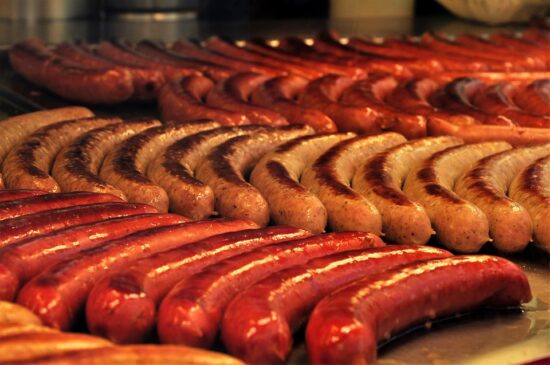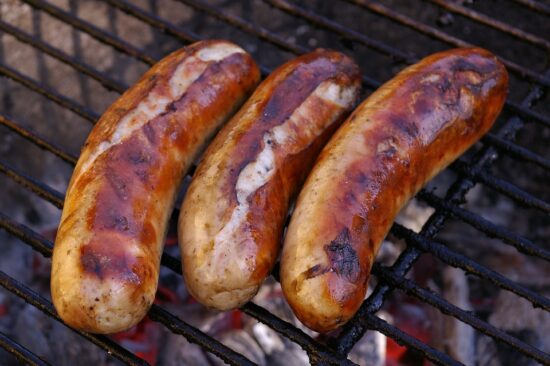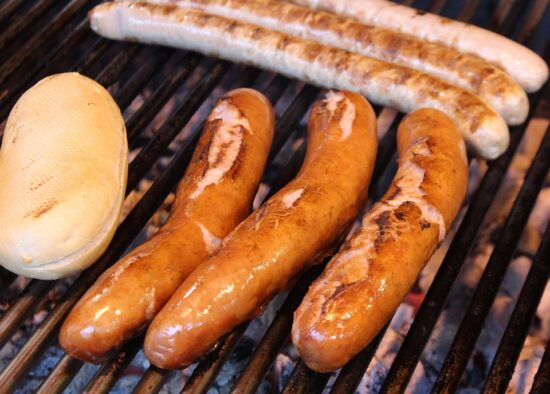Bratwurst
Bratwurst. If we ask a German about a widely accepted champion of all foods in Germany half the answers will be about schnitzel and the other half will almost certainly be about Bratwurst. Up until recently the unmatched taste of a true Bratwurst was unknown outside the German-speaking world but today the distinctive fat German sausage is omnipresent in every respectable beer house on the planet. It’s another thing to try it in the German capital though. Currywurst which is already on this list of Must tastes is a kind of Bratwurst.


As is so often the case with culinary delights, the sausage cannot be traced back to a single inventor – logically given that it is so widespread. Presumably, people often chopped up leftover meat independently of one another, put it in a natural casing, and preserved it with smoke or salt for later use. Artistic representations from Syria, Egypt, and China that are 5,000 years old already show sausages, and the bratwurst received its first literary honors in 800 BC when it was mentioned in Homer’s “Odyssey”. The Romans were then considered to be very special sausage fans.
We have also received written evidence from the early Middle Ages that speaks of the bratwurst. But that does not bring any clarity to the story, rather it confronts us with a riddle: is a fried sausage always described when a sausage is mentioned? Not at all: The basic ingredient of many sausages is called “Brät”; this comes from the Old High German word “brato” and means “muscle meat”.
And so it is anything but certain whether, at least in the past, “bratwurst” could not also mean a plain sausage filled with meat for cooking or smoking. Which doesn’t detract much from today’s taste. And the historical evidence shows that the butchers competed to make the best sausage. There have been rules and regulations for sausage production since the 14th century.
The fact is that different traditions of sausage production soon developed and thus regionally typical sausages. Most sausages contain very finely to coarsely chopped meat from pork, less often from lamb, beef, horse, or other animals. Bratwursts get their individual note from the other ingredients such as marjoram, garlic, fennel, paprika, anchovies, and wine – there are no limits to the imagination. The type of processing and size are also specified for typical regional varieties.
Nuremberg sausages have a fine structure, are seasoned with marjoram, and are a maximum of seven to nine centimeters long. Olma sausages from St. Gallen are made from veal and have a larger diameter. The spicy Thuringian bratwurst contains caraway seeds, has finely chopped sausage meat, is filled in natural casings, and is 15 centimeters long. Its oldest written mention comes from 1404. Finally, the somewhat coarser Coburg Bratwurst contains fresh egg and must be 31 centimeters long raw.



